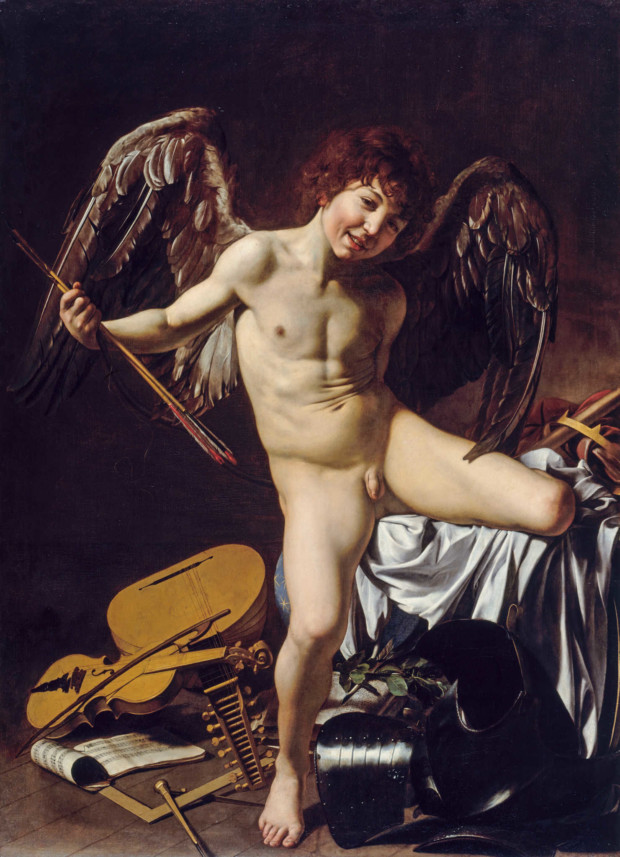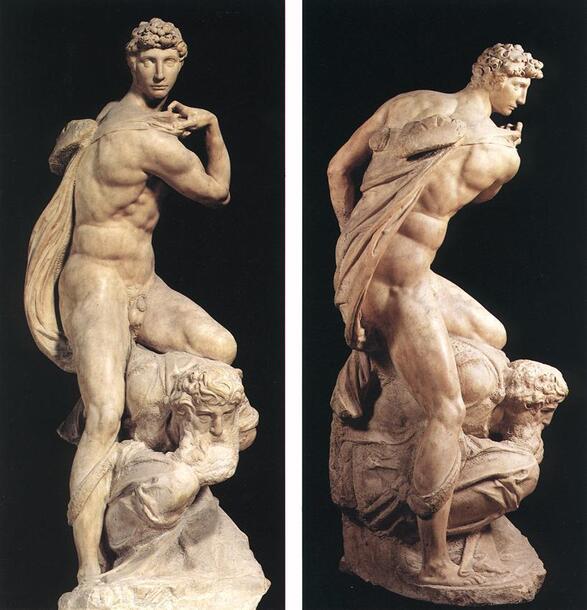Masterpiece Story: Dynamism of a Dog on a Leash by Giacomo Balla
Giacomo Balla’s Dynamism of a Dog on a Leash is a masterpiece of pet images, Futurism, and early 20th-century Italian...
James W Singer, 23 February 2025
Virgil’s famous saying amor vincit omnia means “love conquers all.” Famous Baroque painter, Caravaggio, clearly inspired by the famous sentence painted this young and reckless Cupid. He triumphs over science, music, fame, and power – all these symbols are scattered at his feet. The boy has eagle wings and is captured in motion as if sitting down or climbing down from a table covered in cloth. This daring depiction is one of the highlights of the Gemäldegalerie collection which you can visit it in Berlin.

Cupid’s position indicates a homoerotic note in the painting. His legs are spread, so that his genitals are exposed almost in the center of the composition. There is a striking resemblance to Michelangelo’s The Genius of Victory, which is now at the Palazzo Vecchio in Florence. The subject, as well as a naked depiction of a young male, was common for the age.



Caravaggio painted directly from a live model. The painter Orazio Gentileschi, whom you might know as the father of Artemisia Gentileschi, lent Caravaggio the props (such as wings) to use in the painting. This allows the scholars to precisely date the work.
The painting proved to be a great success among Rome’s gentiluomini and litterati. The interesting fact is that it was not initially entitled Amor Vincit Omnia. The Virgilian sentence was first linked to the painting by the critic Giovanni Pietro Bellori, who mentioned the work in his biography of Caravaggio from 1672.
DailyArt Magazine needs your support. Every contribution, however big or small, is very valuable for our future. Thanks to it, we will be able to sustain and grow the Magazine. Thank you for your help!